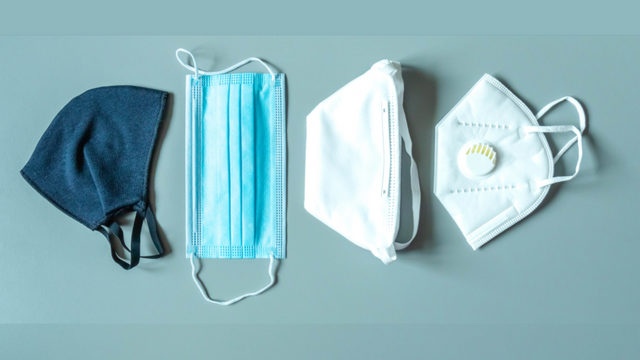COVID-19: How much protection do masks offer?

Can masks help slow the transmission of the coronavirus that causes COVID-19? Yes, masks, combined with other preventive measures such as frequent hand washing and physical distancing, help slow the transmission of the virus.
So why wasn't wearing masks recommended at the beginning of the pandemic? At the time, experts still did not know to what extent people with COVID-19 could spread the virus before showing symptoms. It was also not known that some people with COVID-19 do not have any symptoms. Without knowing it, these two groups can spread the virus to others.
These discoveries led public health organizations to radically change their minds about the use of masks. The World Health Organization and the US Centers for Disease Control and Prevention now include wearing masks in their recommendations to slow the transmission of the virus.
How do the different types of masks work?
Surgical masks
Also known as medical masks, surgical masks, and 3 Ply Disposable Face Masks are disposable, do not fit, and protect the nose and mouth of the wearer from contact with droplets, splashes, and sprays that may contain microbes. Surgical masks also filter large particles in the air. They can protect others by reducing exposure to the saliva and respiratory secretions of the person using it.
At the moment, the US Food and Drug Administration has not approved any type of surgical mask specifically for protection against coronavirus, but these may provide some protection when N95 masks are not available.
N95 masks
They are actually a type of respirator, and N95 masks and KN95 Mask offer more protection than a surgical mask because they can filter out both large and small particles when inhaled by the wearer. As the name implies, the mask is designed to block 95% of very small particles. Some N95 masks have valves that make it easier to breathe through them. With this type of mask, unfiltered air is released when the person wearing it exhales.
Healthcare providers must be trained and tested to confirm that the mask seals well before using an N95 respirator on the job. Like surgical masks, N95s are intended to be disposable. But researchers are testing to find ways to disinfect the N95 masks and make them reusable.
Cloth masks
The cloth mask is intended to catch the droplets that are released when the wearer speaks, coughs, or sneezes. Asking everyone to wear cloth masks can help reduce the spread of the virus by people who have COVID-19 but don't know it.
Cloth masks are very likely to reduce transmission of the COVID-19 virus when widely used in public places. And countries that required the use of face masks, screening tests, isolation, and physical distancing early in the course of the pandemic have been successful in reducing transmission of the virus.
Tips for adjusting to wearing a mask
It can be challenging to get used to wearing a mask. Here are some tips to make this transition:
- Start small. Put the mask on at home for a short time, like when you watch TV. Then put it on for a short walk. Gradually increase the time you wear it until you feel more comfortable.
- Find the one that suits you best. If your mask does not fit you comfortably, or if it is very difficult to breathe when you wear it, consider other options. Masks come in a wide variety of styles and sizes.
If these tips don't help, or if you are concerned about wearing a mask, talk to your doctor about how to protect yourself and others during the pandemic.